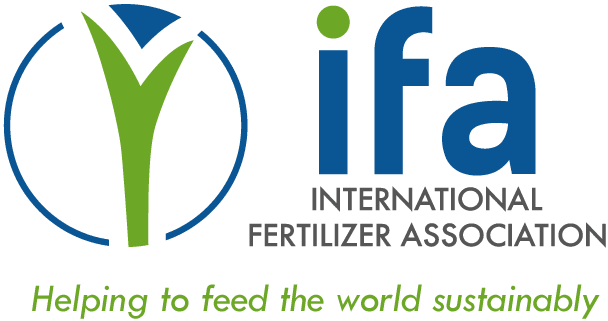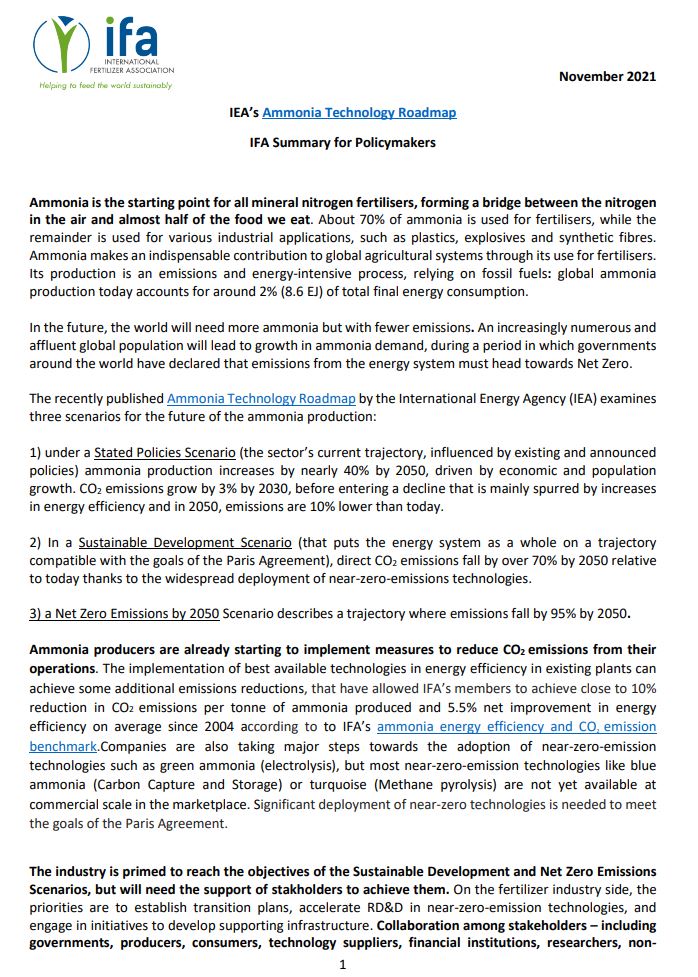Fertilizer Production
Sustainable Fertilizer Production
Achieving the goals of the Paris Agreement by working towards a
significant reduction
in global greenhouse gas (GHG) emissions, ideally 40% to 50% by 2030
The fertilizer industry
is committed to playing its part
to reduce GHG emissions and the general environmental footprint from the production of fertilizers and has already made great strides.
Reduced Nitrous Oxide (N2O) emissions
Since the implementation of innovative technological solutions in advanced catalytic processes, some fertilizer producers have achieved an aggregate reduction of over 85% of N2O emissions (and a potential of 90 to 95% could be achieved with a more widescale implementation).
Reduced CO2 emissions
Since 2004, IFA’s voluntary benchmarks have observed a 14.5% reduction in the CO2 emissions rate per tonne of ammonia produced by participating members mainly due to investment in plant revamps as well as new and efficient capacity coming online.
Improved energy efficiency
Plants built today with the best available technologies use 30% less energy per tonne of ammonia produced compared to older plants; while older plants have also shown tremendous progress in cutting their energy requirements through improvements and upgrades on their production sites.
Carbon capture and reuse
The capture and re-use of CO2 emitted by fertilizer plants have enabled production sites to measurably and consistently reduce their GHG emissions from fertilizer production. IFA members around the world successfully capture hundreds of thousands of tonnes per year.
Nutrient recovery
IFA members are actively pursuing phosphorus and nitrogen recycling to save energy compared to mining and transport while supporting sustainable agriculture. Several plant-scale trials are under way to replace mined phosphates by recovering phosphorus from meat, bone and sewage sludge ash and as well as struvite.
Land re-use
Phosphate and potash producers have a range of schemes in place to reclaim land used for mines and other production purposes, many of which help to sequester carbon in soils. In 2017, for example, producers operating in the U.S. reclaimed 1,172 hectares of land.
Carbon neutral production
Academic institutions, R&D centres, and IFA members are working on
techniques to produce Green Ammonia entirely from sustainable, carbon-neutral inputs, like biomass or renewable electricity, with a growing number of pilot projects, currently in operation or announced, including 12 IFA members.
Phosphogypsum re-use
The fertilizer industry is also pursuing the total reuse of phosphogypsum (PG), a byproduct of phosphoric acid production that can be used as a multi-nutrient fertilizer and soil amendment to improve plant yields and increase soil organic carbon capture as well as a construction material. Some 30% of annual global production, estimated at 60 million tonnes, of PG is now reused, with countries such as Belgium and Brazil already reusing 100%.
A low-carbon fertilizer industry by 2050
In 2019, IFA formally agreed to partner with the International Energy Agency (IEA) and the European Bank for Reconstruction and Development (EBRD) to develop a Global Technology Roadmap for the
Nitrogen Fertilizer Sector to pursue a pathway towards a more sustainable energy sector and a lower carbon footprint.

